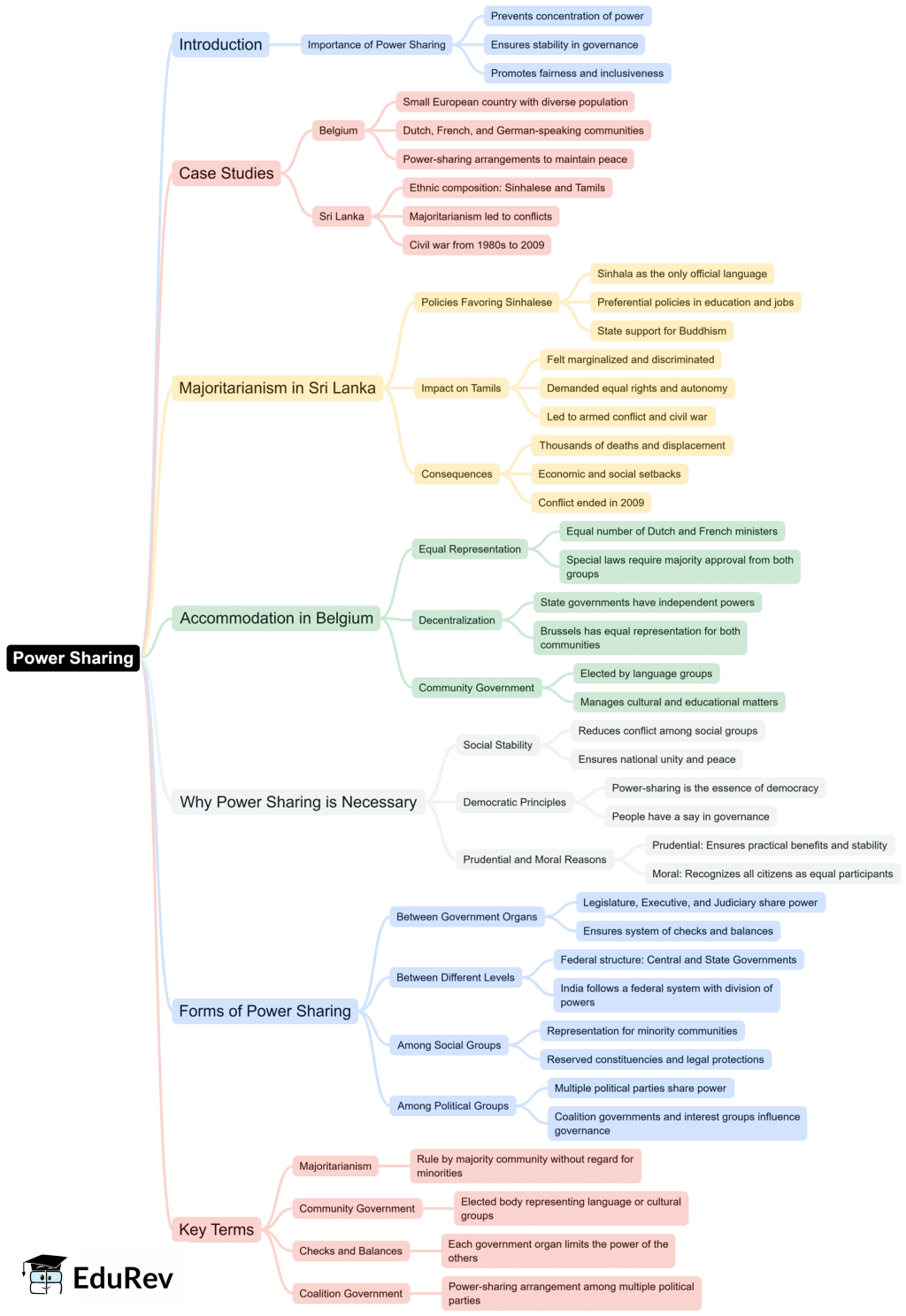Class 10 Exam > Class 10 Notes > Social Studies (SST) Class 10 > Mind Map: Power Sharing
Mind Map: Power Sharing | Social Studies (SST) Class 10 PDF Download

The document Mind Map: Power Sharing | Social Studies (SST) Class 10 is a part of the Class 10 Course Social Studies (SST) Class 10.
All you need of Class 10 at this link: Class 10
|
66 videos|798 docs|79 tests
|
FAQs on Mind Map: Power Sharing - Social Studies (SST) Class 10
| 1. What is power sharing in a political context? |  |
Ans.Power sharing refers to the distribution of political power among various groups in a society. It involves ensuring that different communities, ethnicities, or political parties have a stake in governance, which can promote stability and prevent conflicts. Power sharing can take many forms, including federalism, decentralization, and coalition governments.
| 2. Why is power sharing important in a democracy? |  |
Ans.Power sharing is crucial in a democracy as it helps to represent diverse interests and viewpoints within a society. By sharing power among different groups, it fosters inclusivity and ensures that minority voices are heard, reducing the chances of marginalization and conflict. This leads to more equitable governance and strengthens democratic institutions.
| 3. What are some examples of power-sharing arrangements? |  |
Ans.Examples of power-sharing arrangements include federal systems like the United States, where states have significant autonomy, and coalition governments like those in Belgium, where multiple parties share power to reflect the country's linguistic and regional diversity. Another example is the power-sharing agreement in post-conflict societies such as the Good Friday Agreement in Northern Ireland.
| 4. How can power sharing contribute to conflict resolution? |  |
Ans.Power sharing can contribute to conflict resolution by addressing grievances of different groups in society. By ensuring that all relevant parties have a role in decision-making, it can reduce feelings of exclusion and resentment, thereby lowering the risk of violent conflicts. This collaborative approach can lead to more sustainable peace and reconciliation efforts.
| 5. What challenges can arise from power-sharing arrangements? |  |
Ans.Challenges in power-sharing arrangements can include difficulties in reaching consensus among diverse groups, potential deadlock in decision-making, and the risk of reinforcing divisions rather than bridging them. Additionally, if not managed properly, power sharing can lead to competition for power rather than cooperation, potentially destabilizing the political landscape.
Related Searches

















